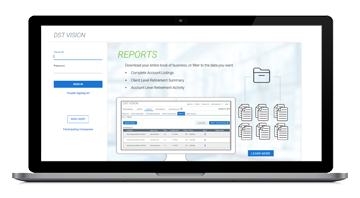Private credit: when direct lending and asset-based lending unite
Private credit—the recent outpouring of interest within this space has been nothing short of extraordinary. Still, many investors have yet to discover the full potential of this asset class. How can we demystify the inner workings of private credit and get the most out of investor portfolios? Let’s focus on two key areas of private credit: asset-based lending and direct lending.

Private credit strategies have been used for decades by institutional investors, pension plan sponsors, foundations and endowments. The landscape is currently undergoing a monumental shift, as the retail investment community taps into these strategies like never before. But with this newfound accessibility comes the responsibility to inform and educate. Before delving into the attributes of asset-based lending (ABL) and direct lending, we briefly touch on the broader investment opportunity.
Underscoring the private credit opportunity
The private credit market has gained tremendous momentum over the past 15 years. Defined as private lending outside of the banking system, private credit has historically sought income generation and downside protection potential for investors. We classify the private credit market into three main categories: direct lending, ABL, and opportunistic credit.
Private credit comes in many shapes and sizes
Exploring the three main categories of private credit
Direct lending and opportunistic credit offer similar risks: largely corporate risks. Corporate risks refer to the typical risks that attend high yield, broadly syndicated loans and equity markets and include competitive pressures, input costs, working capital management, access to funding, tax issues, regulation, etc. ABL, on the other hand, does not have meaningful corporate exposure because investors hold specific assets. While corporate creditworthiness can be important in instances where a borrower generates the cash flows to service asset-level debt (think of a mortgage on a building with one corporate tenant), risk mitigation through hard assets, such as aircraft and machinery equipment, is one of the defining attributes of ABL.
Direct lending strategies in a nutshell
Retail investors with allocations to private credit are very likely exposed mainly, if not entirely, to direct lending. Direct lending—or direct loans made to corporations by non-bank entities—represents an estimated 45% of the total private credit market.1
Designed to support companies and private equity sponsors, direct lending tends to benefit from customized terms and structures, offers enhanced diversification potential, and complements a traditional 60/40 portfolio of public markets assets.
Shining the spotlight on ABL
While direct lending may be one of the most accessible areas of private credit at the moment, it's really only the tip of the iceberg. As mentioned, ABL contrasts with direct lending through the security of specific assets, placing them beyond the reach of general corporate creditors such as direct lenders, high yield bond holders and broadly syndicated loan holders.
ABL offers enhanced return opportunities; rooted in the highly specialized sourcing, underwriting, and origination of bilaterally negotiated loans, and leases. The difficulty of originating investments secured by mission critical equipment, airplanes and commercial mortgages, and the industry specialization required to structure loans and leases, tends to command a premium for ABL investors. For example, not everyone can purchase and maintain a $45 million aircraft. Not only do prospective aircraft buyers need to have specialization in areas such as aircraft maintenance and engine condition, but they must be able to prove their worth as credible investors. Lastly, ABL seeks to provide contractual cash flows (through loans made to companies backed by tangible hard and financial assets), which may offer both a stable cash flow stream and high-income potential.
ABL differs from direct lending in many respects
Comparing and contrasting two forms of lending
How ABL investments are structured
An important feature of ABL is how loans and leases are structured. An asset-based loan or lease differs from direct lending, high yield and broadly syndicated loans because they are often self-amortizing and less exposed to default risks. A self-amortizing loan or lease is one whose periodic payment includes not just interest but also amortization, just like a residential mortgage. Each payment therefore reduces outstanding principal and helps derisk a portfolio.
There are potential benefits to self-amortizing loan structures
Self-amortizing loans help reduce default risks, total interest costs and foster a greater ease in budgeting
How ABL can complement a direct lending allocation
Retail investors now have a broader array of private credit investment options than ever before. Yet, they probably lack the resources and access to invest in the three specialized categories described above in the manner of larger institutions. After all, the ABL space generally encompasses asset types as wide ranging as residential loans, commercial real estate, healthcare financing, aircraft leases, ships, heavy equipment, and consumer loans. Moreover, access often is limited to niche managers that specialize in one of these. How is a resource-constrained retail investor supposed to build a diversified ABL portfolio comprised of specialty managers? Is there another way?
We believe there is. Another way for retail investors to tap the ABL market would be to consider a manager that can oversee a diversified, cycle resistant program that allocates tactically across asset types. Maintaining a well-diversified private credit portfolio with a trusted investment manager that has established sourcing partnerships, underwriting expertise and a track record of investing across numerous cycles and asset types is important.
The ABL space encompasses asset types as different as residential loans, commercial real estate, healthcare financing, aircraft leases, ships, heavy equipment, and consumer loans.
How ABL and direct lending fare in periods of instability
In general, both ABL and direct lending tend to perform well in periods of economic instability. ABL enjoys the protection of specific collateral that is beyond the reach of general creditors in the event of financial distress or bankruptcy. While direct lenders and high yield bondholders may have to enter into extensive restructuring proceedings, ABL lenders have exclusive rights to repossess or take over their specific assets, be they be a building, machinery, or intellectual property. In instances where ABL managers own assets and lease them out, as is the case with aircraft, equipment finance, and shipping, they can repossess the assets from struggling lessees and redeploy them to healthy lessees while general creditors (i.e., direct lenders) fight over the borrower’s remaining assets.
To sum things up
While some retail investors have already started integrating private credit into their portfolios, others are just beginning.
If you’re invested in private credit, there’s already a good chance you have exposure to direct lending. But what about ABL? Complementing a direct lending allocation with ABL has diversification benefits that should be considered, including:
- attractive absolute return potential with low correlation to traditional markets, complementing portfolios with corporate exposure.
- all-weather investments secured by tangible assets exhibiting robust cash flows, with an emphasis on principal protection opportunities, diverse high-quality collateral, and borrower profiles.
It’s essential to take the time to understand how each individual category could improve the risk/return attributes of your traditional portfolio. And why not? Private credit is more accessible than ever before.
Understanding the risks
Investing in private credit or asset-based lending (ABL) involves several risks, including credit risk, liquidity risk, and risks associated with leverage. Similar to public debt instruments, private credit faces the risk that issuers may experience temporary or enduring financial distress, potentially falling short or becoming incapable of meeting their obligations to creditors. To help mitigate this risk, lenders must carefully select quality issuers with strong fundamentals and engage in ongoing monitoring to ensure these fundamentals remain stable. Liquidity risk is prominent in private credit, as it typically offers lower liquidity compared to traditional corporate bonds. This is particularly evident in the retail sector, where private credit funds often contain illiquid underlying assets and are structured with lock-up periods to limit redemptions. In ABL, limited liquidity poses a key risk, as some collateral assets may lack a readily available market, complicating their sale in the event of borrower default. The asset manager's expertise in managing such situations is crucial. Generally, capital is committed for the loan's term, classifying ABL as a semi-liquid investment strategy. Default risk is also a concern, but my be managed by securing loans with specific assets, often as senior debt, which provides repayment priority in defaults. Additionally, concentration risk arises from exposure to a single industry or sector, making diversification across various sectors, industries, and borrower profiles essential to spread risk and offer a flexibility premium. For these reasons, these funds are typically geared to qualified investors with longer time horizons.
1 Board of Governors of the Federal Reserve System, Private Credit: Characteristics and Risks, Accessible Data
Fund shares are illiquid and, therefore, an investment in the fund should be considered a speculative investment that entails substantial risks. Investors could lose all or substantially all of their investment. Shares of the fund are not listed on any securities exchange, and it is not anticipated that a secondary market for the fund’s shares will develop; therefore, an investment in the fund may not be suitable for investors who may need the money they invest in a specified timeframe. The amount of distributions that the fund may pay, if any, is uncertain. Annual distributions may consist of all or part of your original investment, and therefore may not consist of a return of net investment income. The fund’s use of leverage may not be successful and may create additional risks, including the risk of magnified return volatility and the potential for unlimited loss. Exposure to investments in commercial real estate, residential real estate, transportation, healthcare loans, and royalty-backed credit and other asset-based lending, including distressed loans, may also subject the fund to greater volatility than investments in traditional securities. Investments in distressed loans are subject to the risks associated with below-investment-grade securities. In addition, when a fund focuses its investments in certain sectors of the economy, its performance may be driven largely by sector performance and could fluctuate more widely than if the fund were invested more evenly across sectors.
Past performance is not a guarantee of future results. Diversification does not guarantee a profit nor protect against loss in any market. All overviews and commentary are intended to be general in nature and for current interest. While helpful, these overviews are no substitute for professional tax, investment, or legal advice. Clients and prospects should seek professional advice for their particular situation. Neither Manulife Investment Management, nor any of our affiliates or representatives (collectively Manulife Investment Management) is providing tax, investment, or legal advice.
This material is for informational purposes only and is not intended to be, nor shall it be interpreted or construed as, a recommendation or providing advice, impartial or otherwise. John Hancock Investment Management and our representatives and affiliates may receive compensation derived from the sale of and/or from any investment made in our products and services.
The views presented are those of the author(s) and are subject to change. No forecasts are guaranteed. This commentary is provided for informational purposes only and is not an endorsement of any security, mutual fund, sector, or index. Past performance does not guarantee future results.
MF4221086






